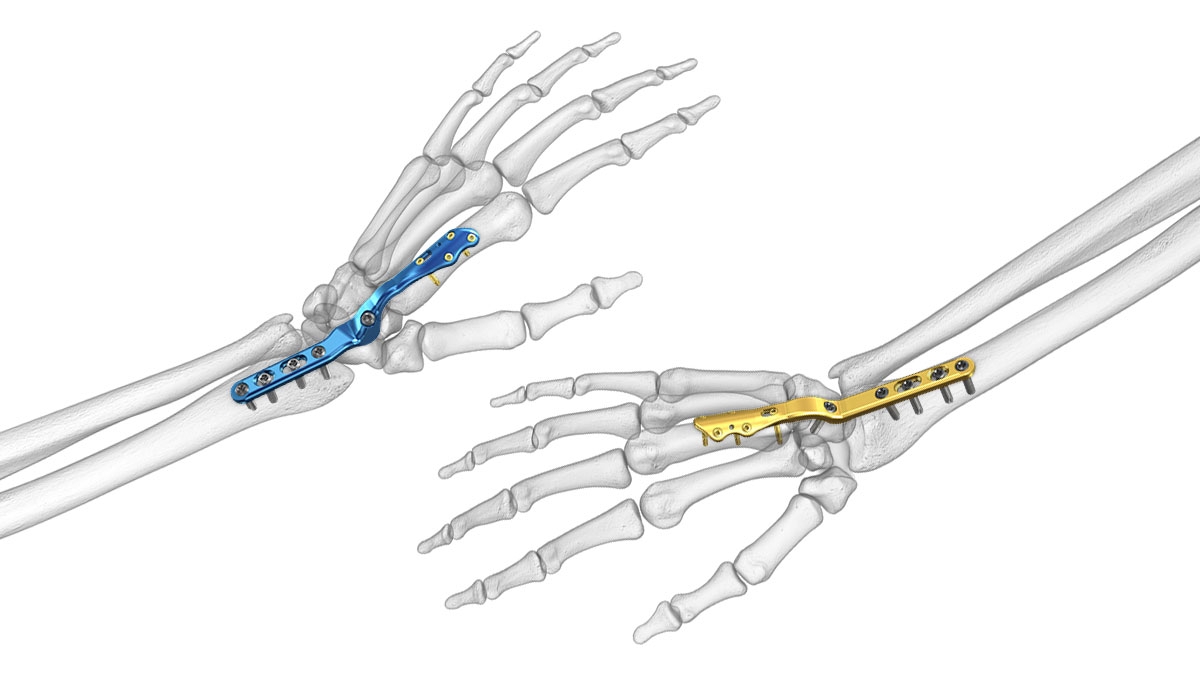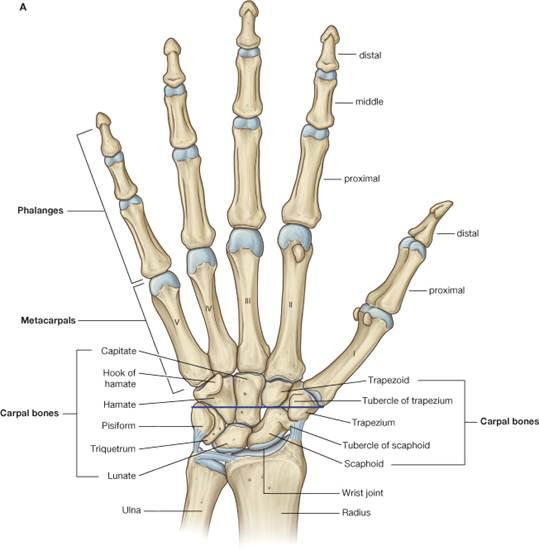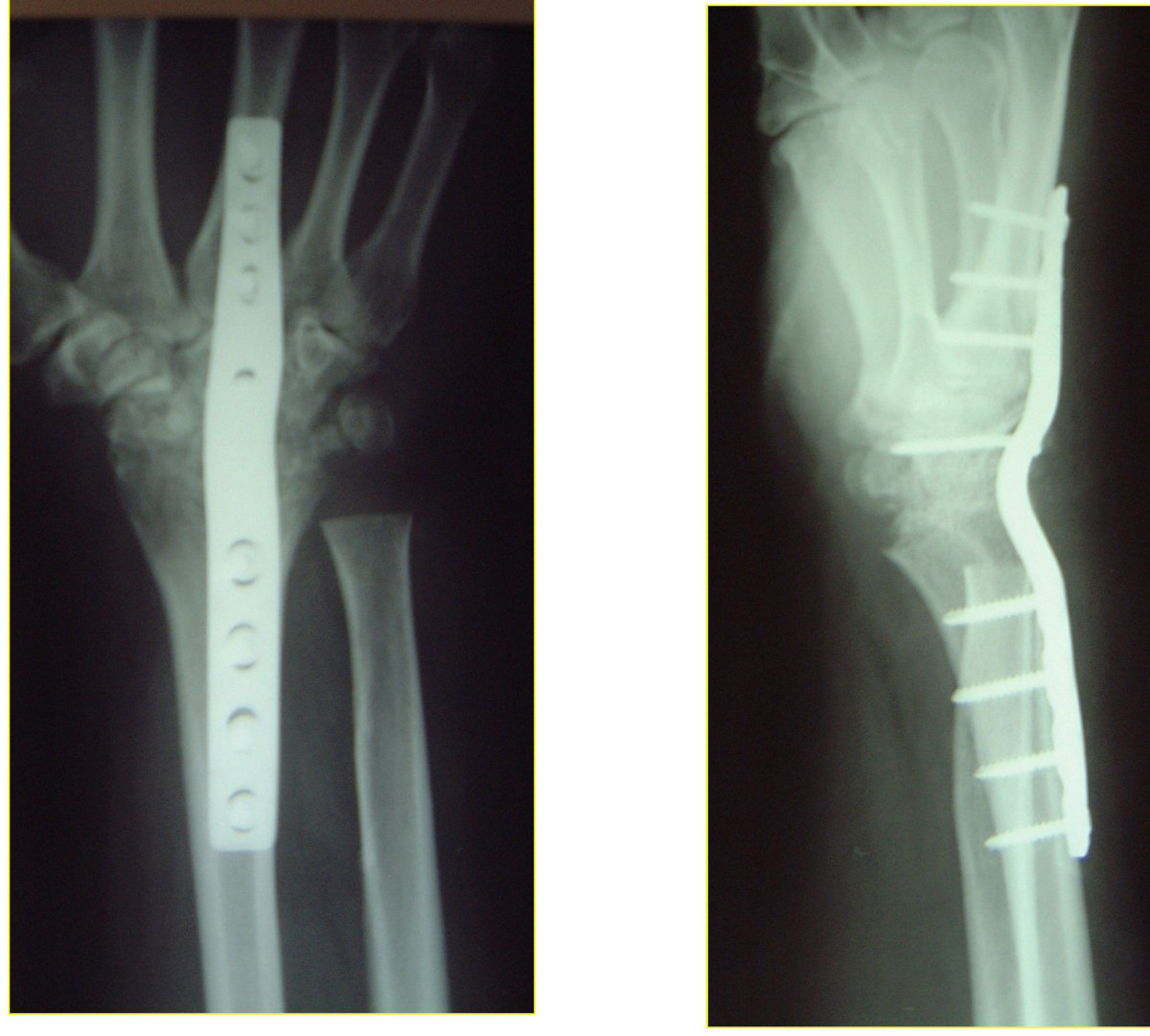What happens when all other forms of wrist arthritis treatment fail? When the pain is so bad, and the suffering is so prolonged, that surgery is only the option? Wrist fusion surgery, otherwise known arthrodesis, is a surgical treatment that removes the wrist joint and encourages the radius (forearm) to grow into the bones of the wrist.
The NHS highlighted that over 10,000,000 people in the United Kingdom are suffering from some form of arthritic condition. Plenty of these cases relate to the wrist and, in particular, osteoarthritis can occur as the joint wears down over time. This is a consequence of repetitive motions through daily activities. It brings limited motion to the wrist joint, along with inflammation and pain. Here are two extra pieces of Wrist Arthritis reading:
- Wrist Arthritis: Educational Guide takes you step-by-step through the causes, symptoms and soft treatments
- Wrist Arthritis: 11 Telling Signs goes into more detail on the initial symptoms
This article has been produced to educate the general public on the anatomy of the wrist, what wrist fusion surgery is, how the operation is performed, and what complications may arise as a result.
Anatomy of the wrist
Our bodies are made up hundreds of different joints, but the wrist boasts an intricacy that is quite unrivalled.
There are eight carpal bones that connect the radius and ulna (forearm) to metacarpals in the hand. There are also a series of constricted ligaments that keep these bones together, and articular cartilage which protects the bone ends from friction.
This is the makeup of a fully functioning hand and wrist that gives us the ability to do so much. As stated at the beginning of the article, big problems arise when the articular cartilage is worn away over time. When the wrist joint deteriorates to the point where steroid injections and splints are no longer an option, wrist fusion surgery should be considered.
Who needs wrist fusion surgery?
With a number of small joints in the wrist, there are plenty of opportunities for one to become arthritic. If this does happen the wrist joint can become incredibly swollen, and subsequently incredibly painful. Most people don’t truly understand cartilage, or the role that it plays. This tough and supple tissue ensures smooth joint movement by absorbing shock and providing a padding across the surface of a joint. You can imagine the inflammatory pain that is caused when, over time, the cartilage loses its smoothness.
While osteoarthritis is a common culprit, other forms of arthritis, such as rheumatoid arthritis or even inflammatory conditions like gout, can also severely affect the wrist joint and potentially lead to the need for fusion surgery. Gout, caused by a buildup of uric acid crystals, can result in sudden and intense attacks of pain, swelling, and redness in the joints, including the wrist, causing significant damage over time if not managed.
When these arthritic conditions advance the alignment of the wrist can completely change. This leads to deformity and subsequent loss of motion in the joint. Fusing the bones together does two things – prevent any further deformation, and improve the alignment of the wrist joint. Fusion may also be needed to align the wrist after a severe traumatic wrist injury. Simply put, wrist fusion surgery is a last resort option for patients with wrist problems that cannot be fixed through smaller surgical procedures.
I have received fast excellent care from Miss Hajipour in relation to the surgical treatment of a trigger finger. The procedure was fast and the resulting scar almost imperceptible. A beautiful job. Miss Hajipour has a great sense of humour which put me at ease before, during and after the fast efficient surgical operation and I cannot recommend her highly enough.
Patient at BMI The Alexandra Hospital, 29th June 2018. Read more reviews.
What is wrist fusion surgery?
The aim of wrist fusion surgery is to alleviate the painful arthritic symptoms by making all the bones grow together into one complete bone. If successful, it means the bones will no longer rub together – thus reducing the swelling around the joint. Fusion surgeries are actually used on other parts of the body too, typically for spinal injuries. Wrist fusion is generally a more complicated procedure, however, as it involves bringing 12 or 13 bones together – in comparison, most joints are made up of only two bones. Before the development and improvement of artificial joint replacements, fusion surgeries were very common.
Wrist fusion surgery aims to connect the radius (forearm), carpal bones (wrist) and metacarpals (hand) in one, fused bone. The ulna bone of the forearm is not included in the wrist fusion.
The goal of a wrist fusion is to get the radius in the forearm, the carpal bones of the wrist, and the metacarpals of the hand to fuse into one long bone. The ulna of the forearm is not included in the fusion. This is because the joints between the ulna and the radius are what give you the ability to twist your wrist and flip your palm. Surgeons do not fuse the ulna for this reason, by doing so a patient will still maintain this vital function.
On the other hand, though, a patient will no longer be able to bend their wrist after wrist fusion surgery. Patients should see the surgery as a bit of a swap-deal. They are exchanging some of their wrist motion for alleviated symptoms of arthritis, and increased joint strength which can be considered more valuable than flexibility. Wrist fusion re-strengthens the wrist joint and this is good news for patients who need a reliable grip for work based activities. Artificial wrist joints should be considered by patients who would prefer wrist flexibility over strength.
What is the surgical procedure for wrist fusion?
Surgeons can perform wrist fusion surgery in many different ways, and typically, this procedure is undertaken using a bone graft from the hip or pelvis. A bone graft is the proces of taking bone tissue from one area of the body and transplanting it into another era that has a deficit. Doing so encourages the two ends of bone to fuse. A surgeon may also try to fuse the bones without a graft by screwing a plate or rod in place to hold the bones together.
Wrist fusion surgery generally lasts around 90 minutes. The surgery may be conducted under a general anaesthetic, meaning you are asleep for the duration of the procedure. However in some cases wrist fusion surgery is performed using a local anaesthetic. This just numbs the wrist and hand. Although patients are awake for procedures performed under local anaesthetic, a surgeon will ensure that you cannot see the surgery as it happens. Once you are under anaesthesia, your surgeon will use a germ-killing solution to make sure that the skin of your wrist and hand are free of infection. An incision is then made down the back of the wrist. Surgeons opt for the back of the wrist because most of the blood vessels and nerves are on the front side, so this lowers the risk of nerve and vessel damage.
After an incision is made, the tendons and ligaments are moved to the side to allow the surgeon a clear view of the bone, ligament and cartilage of the wrist joint. The first step is to remove the articular cartilage from every joint that will become part of the wrist fusion. If the surgeon is performing a bone graft, the graft is placed where the articular cartilage was. To stop the bones from moving and keep them properly aligned while they fuse together, the surgeon will screw a metal plate on the back of the wrist. The plate goes from the radius to the metacarpal bone of the middle finger, and it stays inside your hand permanently. It will only be removed if it becomes problematic.
What are the complications of wrist fusion surgery?
Its the case with all major surgical procedures, there is always going to be a risk of complication. Your surgeon will explain everything, or give you a resource to read prior to the procedure. The risk of complications as a result of wrist fusion surgery is around 20%. That being said, most of the complications are minor. An example of a minor complication would be scar tenderness for a while. Well below 10% of wrist fusion surgery complications are deemed ‘serious’, and they are almost always able to be fixed.
Here’s a run down of some typical complications:
Nerve and Blood Vessel Injury
As explained above, the nerves and blood vessels that go to the hand travel across the wrist joint. With wrist fusion surgery being performed in such close proximity to them, there is a risk of damaging them. Surgeons use retractors to keep the nerves and vessels out of the way during surgery, and this may cause temporary damage.
Infection
All surgeries carry a very low risk of infection but you should be given antibiotics before the procedure to reduce the chances. More antibiotics will be needed if an infection is contracted. In extreme cases, surgery may be needed to combat an infection. This may be necessary if the metal plate or bone graft are the issue.
Nonunion
Unfortunately, there are occasions when the wrist fusion surgery is not a success. When the bones do not fuse together as planned, this is called a nonunion. This will become noticeable if the joint continues to cause pain after the surgery. A second operation will be needed in this case. The second time around, the surgeon will add more bone graft and analyse the plate to ensure that it is aligned correctly.
Tendon Irritation
Lastly, the metal plate that is screwed into the back of the wrist can irritate the tendons that cross this part of the wrist. This is a short term complication and can be treated with ice, medication, or physical therapy. If the irritation persists then your surgeon may have no option but to remove the plate – this will only happen if your surgeon is sure that the wrist fusion process is complete.
Struggling with wrist arthritis and persistent pain? Miss Ladan Hajipour is a specialist hand and wrist surgeon, and would be happy to receive your enquiry. Click here to book an appointment.



